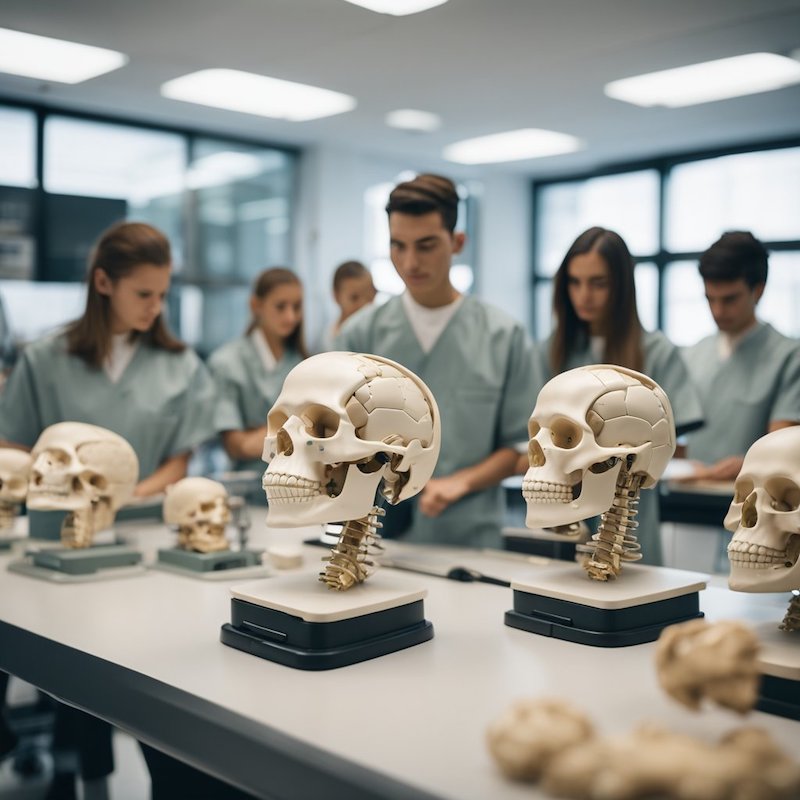Branded Content by Cosmic Press
Image source: Pixabay
Struggling with outdated systems, universities often confront the challenge of managing student health effectively. It’s a matter of striking the right balance: robust university health management systems must be secure yet accessible, comprehensive yet straightforward.
Enter the critical components that transform these systems from administrative burdens into powerful allies in student wellness. Clarity and efficiency become not just desirable but necessary for campus health services to function at their peak – benefiting not just the students, but staff as well. Let’s dissect these essential features.
1. Ease of Use
Simplicity in the user interface is the keystone for successful engagement with a university health management system. Like a well-organized book, users should be able to navigate through pages without losing their place – efficiency is paramount.
Students and staff can confidently engage with interfaces that mirror the intuitive touch of familiar apps. This approach dismantles barriers to adoption, ensuring essential health services are accessed effortlessly.
And here lies the core: streamline complexity into functionality. Intuitive design not only invites interaction but also sustains it, nurturing a community where health management becomes second nature.
2. Comprehensive Training & Support
A system’s excellence is measured not only by its capabilities but also by the ease with which its users can wield those capabilities. Precise and effective data entry processes are critical, akin to a seasoned chef knowing their way around a kitchen.
This is where comprehensive training and support step in, tailored to align with this Foothold Technology guide on EHR implementation. Efficient implementation practices, as laid out in the guide, stress the importance of such synchronization between system functionality and user expertise.
Training that follows these principles ensures that users are well-versed in both entering data meticulously and navigating new updates seamlessly. This dual focus streamlines workflows and fundamentally enhances the system’s reliability – because what good is a sophisticated tool if it’s used incorrectly?
3. Ironclad Data Security
In the interconnected corridors of university health management, data security is not a feature to add on – it’s the foundation. The intimate details of student health records demand a fortress-like system, resilient against any breach attempts.
It’s about constructing digital walls high and protocols strict, ensuring that private information remains just that – private. Reliable encryption methods and user authentication mechanisms must be woven into the system’s fabric.
Nothing less than a steadfast commitment to protecting student data will do. A robust health management system upholds this sacred trust, keeping sensitive data under lock and key while maintaining necessary accessibility for authorized users.
4. Seamless System Integration
A university’s vitality thrives on synergy, especially when it comes to health management systems. The key? Seamless integration. Just as different academic departments collaborate for a comprehensive education, health management systems must effortlessly communicate with other campus software.
The resulting network forms a cohesive digital ecosystem, much like the interlocking gears of a well-tuned machine. It’s essential that these connections facilitate real-time updates and data sharing, without hiccups or delays.
With such integration in place, healthcare providers can make informed decisions swiftly – bolstered by the complete picture of a student’s health landscape. Integrated solutions create a more responsive and efficient environment for managing student health needs across campus services.
5. Real-Time Data Analysis
Reacting to health issues as they arise is only half the battle; the other, more strategic half is in anticipating them. Real-time data analysis enables this forward-thinking approach, empowering administrators to stay one step ahead.
Envision a dashboard that showcases the latest data, pinpoints patterns, and predicts health events. It’s akin to a constant guardian, alert and primed to raise the flag at any sign of deviation.
Such analytical prowess equips university health teams with the means to allocate resources with precision, customize preventive measures, and proactively instruct the campus population. Real-time analytics transform reactive systems into proactive forces for student wellness.
6. Automatic Updates & Compliance
In the realm of health management, stagnation is not an option. University systems must breathe and evolve with the shifting sands of legal and health standards.
Automatic updates serve as the lifeblood of this adaptability, ensuring that compliance is a constant, not a concern. These updates roll out new features and regulatory adjustments as naturally as the campus seasons change – silent yet significant.
By automating this process, universities sidestep the risks associated with outdated information and maintain their edge in providing top-tier health services.
Forging Ahead: Empowering Health Management Excellence
As universities embrace these essential system features, they craft not only a robust health management framework but also a beacon of trust and efficiency for their communities. With the right tools in place, the future of campus wellness looks healthier than ever.
Branded content furnished by our promotional partners. The Daily Sundial editorial staff is not involved in its production. Content does not reflect the views or opinions of the editorial staff.








